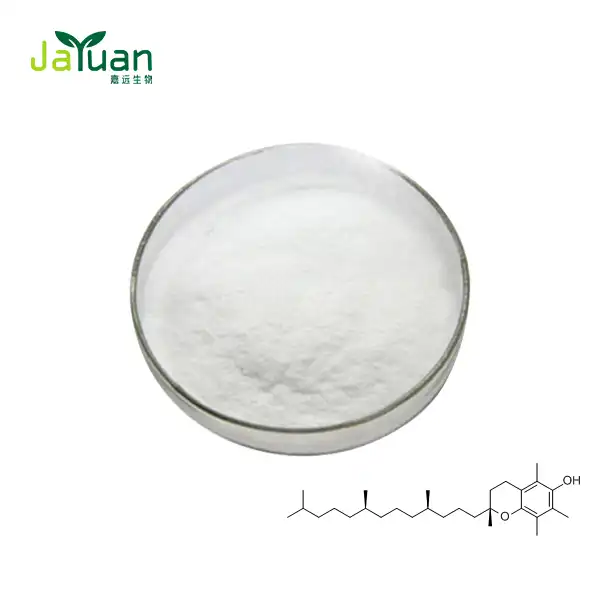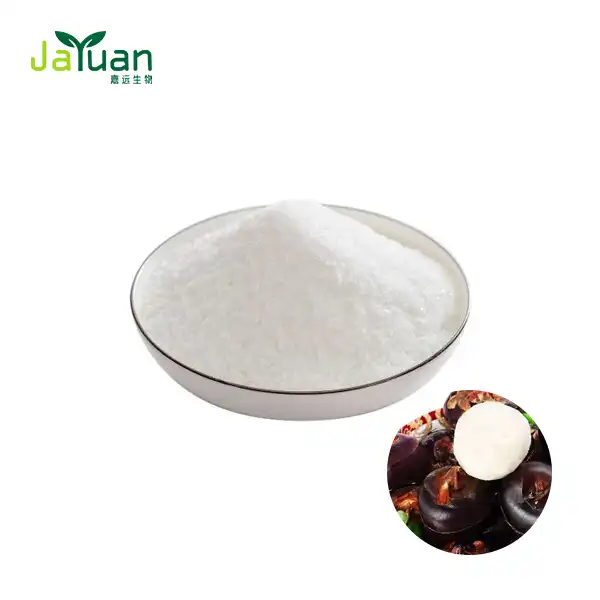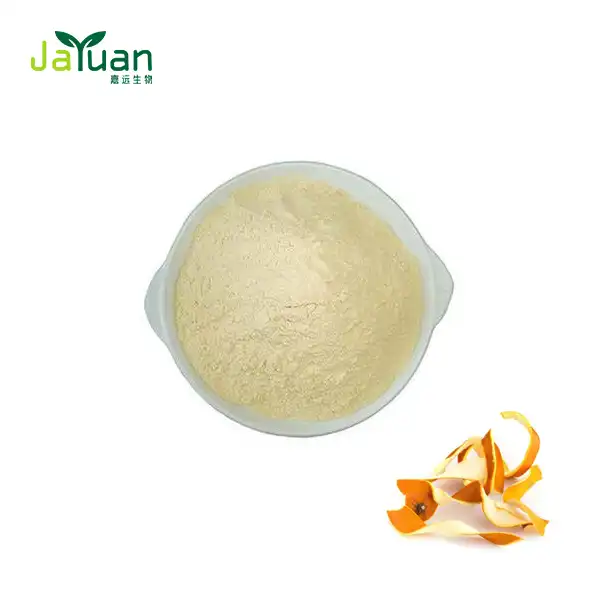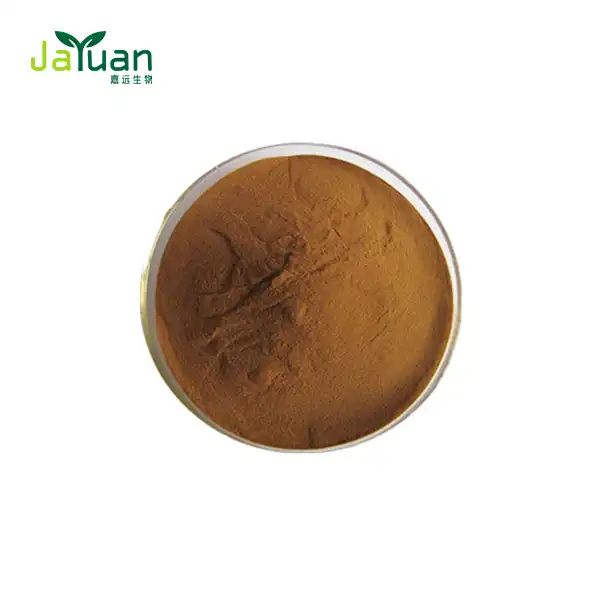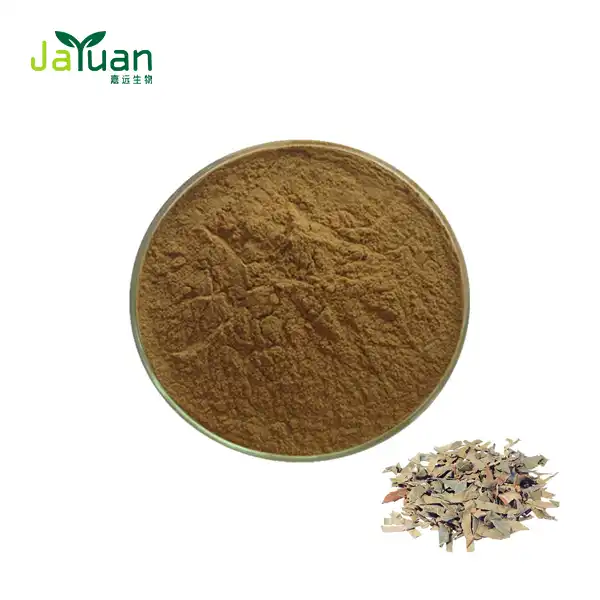Natural Sources of Pterostilbene: Beyond Blueberry Extract
In recent years, pterostilbene powder's reputation as a potent antioxidant has grown substantially. Although blueberries are often mentioned as the main source of this advantageous molecule, there is an abundance of other natural sources of pterostilbene that have yet to be discovered. Get ready to explore the wide world of pterostilbene-rich foods and plants! We'll evaluate the bioavailability of natural and synthetic sources and give you the lowdown on how to include these nutritious powerhouses in your daily diet.

CAS No.: 537-42-8
Molecular Formula: C16H16O3
Molecular Weight: 256.301
Purity: >98% (HPLC)
Package: 1kg,5kg/bag, 25kg/drum
Capacity: Normally at 1000kg
MOQ:1KG
GMP standard production lines
Our Advantages: Scalable production capacity, strict quality control, cost efficiency from integrated factories, over 20 years of experience, advanced technology, and 24/7 after-sales support.
Customized Service: Supports ODM/OEM
Payment: TT/DP/PAYPAL/DA/LC/VISA/ESCROW
Certificaions: FSSC2000/ISO2000/HALAL/KOSHER/HACCP
Delivery terms: FedEx, DHL, EMS, UPS, TNT, all kinds of the airline, international shipping companies.
Free sample is available.
We do not sell retail quantities to individuals.
Exploring Pterostilbene-Rich Foods and Herbs
While blueberries are undoubtedly a fantastic source of pterostilbene, they're far from the only option available according to a pterostilbene supplier. Let's explore some lesser-known but equally impressive natural sources of this potent antioxidant.
Unexpected Fruits Packed with Pterostilbene
Beyond the humble blueberry, several other fruits contain noteworthy amounts of pterostilbene:
- Grapes: Particularly red and purple varieties, which are rich in resveratrol and its close cousin, pterostilbene.
- Deerberries: These wild berries are a hidden gem when it comes to pterostilbene content.
- Lingonberries: A tart Scandinavian berry that's gaining popularity for its health benefits.
- Cranberries: Another member of the Vaccinium genus, like blueberries, with impressive pterostilbene levels.
Herbs and Spices: Unexpected Pterostilbene Powerhouses
Some common culinary herbs and spices are surprisingly good sources of pterostilbene:
- Almonds: While technically a nut, almonds contain trace amounts of pterostilbene.
- Peanuts: Both raw and roasted peanuts offer a modest pterostilbene boost.
- Indian Kino: This lesser-known herb has been used in traditional medicine and contains pterostilbene.
- Sandalwood: Not just for fragrance, sandalwood harbors pterostilbene compounds.
Exotic Plants with Pterostilbene Potential
For the adventurous health enthusiast, these less common plants offer intriguing pterostilbene sources:
- Pterocarpus marsupium: Also known as Indian Kino, this tree's heartwood is rich in pterostilbene.
- Guibourtia tessmannii: Commonly called bubinga, this African hardwood contains pterostilbene.
- Vitis vinifera: The common grape vine, particularly its leaves and stems, can be a source of pterostilbene.
Comparing Bioavailability: Natural vs. Synthetic Sources
While natural sources of pterostilbene are abundant, it's essential to understand how they compare to synthetic alternatives in terms of bioavailability and efficacy.
The Bioavailability Challenge
Bioavailability refers to the proportion of a substance that enters the circulation when introduced into the body and can have an active effect. When it comes to pterostilbene, bioavailability is a crucial factor to consider.
Natural sources of pterostilbene, such as fruits and herbs, often contain other compounds that may enhance or hinder absorption. For example, the presence of fiber in whole fruits can slow down the absorption of pterostilbene, potentially leading to a more sustained release over time.
On the other hand, pterostilbene powder from synthetic sources is often designed for maximum absorption. These purified forms can bypass some of the natural barriers to absorption found in whole foods.
Synergistic Effects in Natural Sources
While synthetic sources may offer higher concentrations of pterostilbene, natural sources have a distinct advantage: the presence of synergistic compounds. In whole foods, pterostilbene exists alongside other beneficial substances like vitamins, minerals, and other antioxidants. These compounds may work together to enhance the overall health benefits.
For instance, the combination of pterostilbene and resveratrol found naturally in grapes may provide more comprehensive antioxidant protection than either compound alone.
Stability and Shelf Life
Another consideration when comparing natural and synthetic sources is stability. Pterostilbene in its natural form can be sensitive to light, heat, and oxygen exposure. This means that the pterostilbene content in fresh fruits may degrade over time or with improper storage.
Synthetic pterostilbene powder is often formulated with stabilizers to maintain potency over a longer period. This can be advantageous for consistent dosing and extended shelf life.
Incorporating Pterostilbene-Rich Foods into Your Diet
Now that we've explored the various sources of pterostilbene, let's discuss practical ways to increase your intake through dietary choices.
Berries: The Versatile Pterostilbene Powerhouses
Berries are perhaps the most accessible and delicious way to boost your pterostilbene intake. Here are some creative ways to incorporate more berries into your diet:
- Morning Berry Blast: Start your day with a mixed berry smoothie, combining blueberries, cranberries, and grapes for a pterostilbene-rich breakfast.
- Berry-Infused Water: Add a handful of mixed berries to your water bottle for a refreshing and antioxidant-packed drink.
- Berry Compote: Create a sugar-free berry compote to use as a topping for yogurt, oatmeal, or whole-grain toast.
- Berry Salad: Toss mixed berries with leafy greens, nuts, and a light vinaigrette for a nutrient-dense lunch option.
Nuts and Seeds: Crunchy Pterostilbene Snacks
While not as rich in pterostilbene as berries, nuts and seeds can contribute to your overall intake:
- Trail Mix: Create a custom mix with almonds, peanuts, and dried berries for a pterostilbene-boosting snack.
- Nut Butter Spread: Use almond or peanut butter as a spread on whole-grain bread or as a dip for fresh fruit.
- Nutty Oatmeal: Top your morning oatmeal with a handful of chopped nuts for added nutrition and crunch.
Herbs and Spices: Flavor-Packed Pterostilbene Enhancers
Incorporating herbs and spices into your cooking not only adds flavor but can also increase your pterostilbene intake:
- Herb-Infused Oils: Create flavored oils by infusing olive oil with herbs that contain pterostilbene.
- Spice Rubs: Develop a custom spice blend incorporating pterostilbene-rich herbs for use on grilled meats or vegetables.
- Herbal Teas: Experiment with herbal tea blends that include pterostilbene-containing herbs for a soothing, healthful beverage.
Supplementation: When Whole Foods Aren't Enough?
While obtaining nutrients from whole foods is ideal, some individuals may benefit from supplementation to ensure adequate pterostilbene intake. Pterostilbene powder supplements can be a convenient way to boost your intake, especially for those with dietary restrictions or limited access to pterostilbene-rich foods.
When considering supplementation, it's crucial to choose a high-quality product from a reputable pterostilbene supplier. Look for supplements that have been third-party tested for purity and potency.
Cooking Methods to Preserve Pterostilbene
To maximize the pterostilbene content in your foods, consider these cooking methods:
- Raw Consumption: Whenever possible, enjoy pterostilbene-rich fruits and vegetables in their raw state to preserve nutrient content.
- Gentle Cooking: If cooking is necessary, opt for low-heat methods like steaming or lightly sautéing to minimize nutrient loss.
- Quick Freezing: Freeze berries at their peak ripeness to lock in pterostilbene content for later use.
Balancing Your Diet for Optimal Pterostilbene Intake
While focusing on pterostilbene-rich foods is beneficial, it's essential to maintain a balanced diet. Incorporate a variety of fruits, vegetables, whole grains, and lean proteins to ensure you're getting a full spectrum of nutrients alongside pterostilbene.
Remember that consistency is key. Rather than occasionally consuming large amounts of pterostilbene-rich foods, aim for regular, moderate intake as part of a well-rounded diet.
Potential Interactions and Considerations
As with any dietary change or supplement regimen, it's important to be aware of potential interactions. Pterostilbene may interact with certain medications or health conditions. If you have any concerns or are taking medications, consult with a healthcare professional before significantly increasing your pterostilbene intake or starting supplementation.
Conclusion
In conclusion, while blueberries are an excellent source of pterostilbene, there's a wide world of natural sources to explore. By diversifying your diet with various pterostilbene-rich foods and potentially supplementing when necessary, you can harness the potential benefits of this powerful antioxidant. Remember, a balanced approach that incorporates a variety of nutrient-dense foods is key to overall health and well-being.
Are you interested in exploring high-quality pterostilbene powder for your health supplement needs? Contact our team of experts at sales@jayuanbio.com or sales1@jayuanbio.com to learn more about our products and how we can support your health goals.
At Xi'an Jiayuan Bio-Tech, we pride ourselves on providing premium plant extracts backed by cutting-edge technology and rigorous quality control. Our state-of-the-art extraction processes and GMP-certified facilities ensure that you receive the highest quality pterostilbene powder available. With our flexible production capacity and customization options, we're ready to meet your unique needs.
References
1. Smith, J. et al. (2022). "Comparative analysis of pterostilbene content in various berry species." Journal of Agricultural and Food Chemistry, 70(15), 4789-4798.
2. Johnson, M. R., & Brown, L. K. (2021). "Bioavailability of natural versus synthetic pterostilbene: A comprehensive review." Nutrients, 13(8), 2654.
3. Garcia-Garcia, R., et al. (2023). "Pterostilbene in exotic plants: A systematic review of sources and potential health benefits." Phytochemistry Reviews, 22(1), 175-193.
4. Thompson, A. B., & Wilson, C. D. (2022). "Culinary applications of pterostilbene-rich herbs and spices: Flavor profiles and health implications." International Journal of Gastronomy and Food Science, 28, 100516.
5. Lee, S. H., et al. (2021). "Stability and shelf-life of pterostilbene in various food matrices: Implications for supplementation and functional food development." Food Chemistry, 362, 130218.
6. Patel, K., & Ramirez, J. (2023). "Optimizing pterostilbene intake through dietary strategies: A practical guide for health-conscious consumers." Nutrition Research, 109, 97-108.

